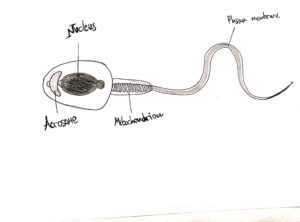The hamster egg penetration test (HEPT) was first developed in the 1970s. It is observed on the observation that upon removal of the zona pellucida of hamster ova, the eggs allowed penetration of sperm by other species. HEPT measures the ability of sperm to undergo capacitation, cause the acrosome reaction, fuse with the egg membrane, and undergo decondensation within the cytoplasm of the oocyte.
The semen samples are obtained by masturbation after at least 48 h abstinence. The spermatozoa are then pelleted by centrifugation at 500 g for 6 min. and subsequently washed. Mature ova are collected from female golden hamsters (Mesocricetus auratus) and induced to superovulate.
While the HEPT provides useful information, it is not commonly utilized today in most IVF clinics. Several studies have demonstrated that this test is a useful predictor of fertilization in conventional IVF, while others found it not adequate for predicting IVF success. Assay variability is also a concern, with 14% of men showing significantly different values in two consecutive assays.


